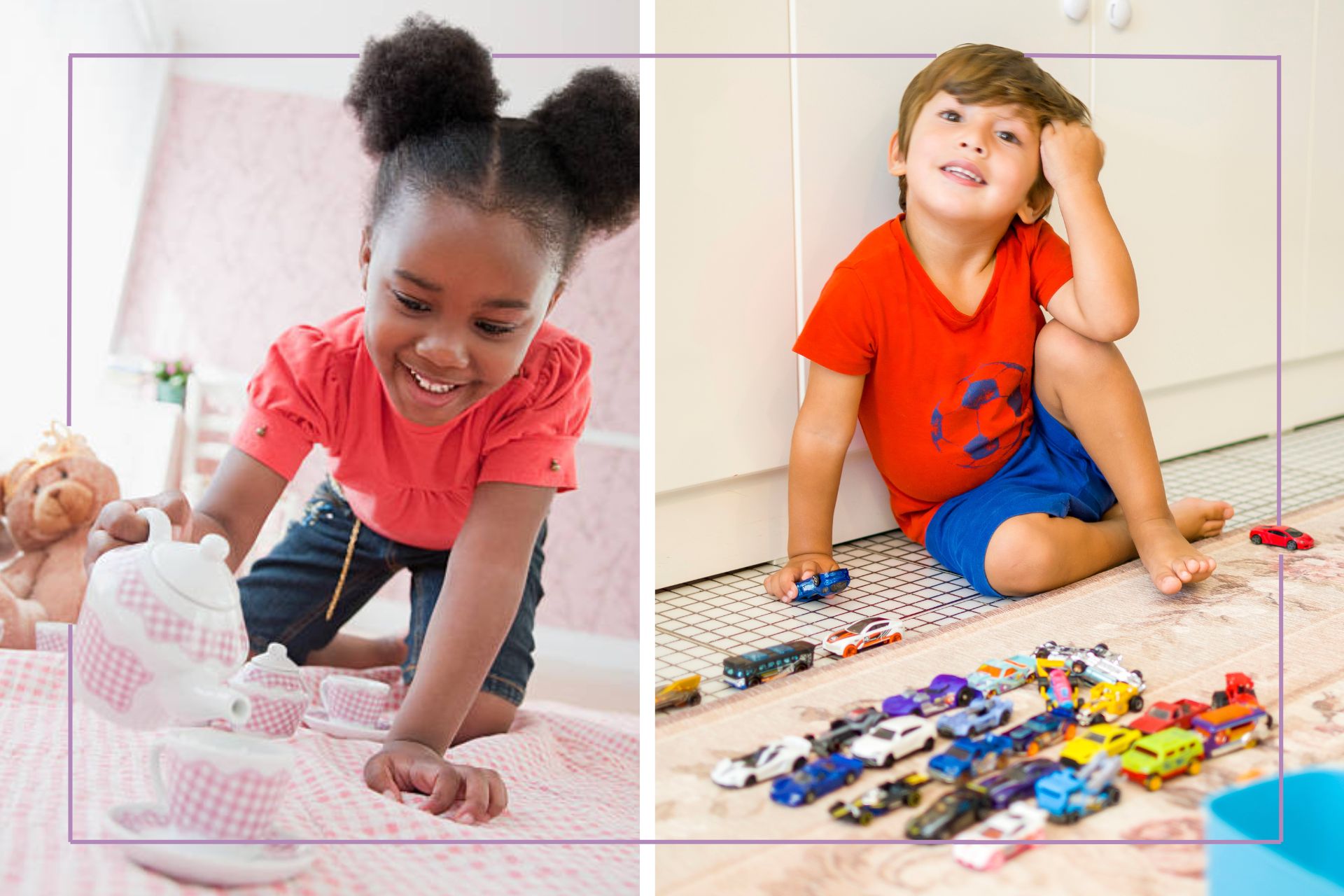Why do boys go for trucks and girls prefer dolls? Child development and play expert explains all (it might surprise you)
Plus three ways parents can influence inclusive gender-neutral play...


Choosing toys can be an overwhelming minefield for parents who want to 'get it right'. Whether they're choosing the most engaging toy, or the one with the most longevity or maybe the toy with the best educational advancements - it can be tricky to decide. But when it comes to gender, does that influence parents' toy choices or is it something innate in kids - the age-old 'nature Vs nurture' debate...
Toys are the work of children, from ride-on toys and tractor toys to non-toys like pots, pans and old remote controls - toys are a brilliant way to engage and broaden imagination, fine motor and gross motor skills and help build social skills. And, gender aside, whether it's sensory play or good old-fashioned mud kitchen play - a balanced play diet is essential.
But should boys play with certain toys over girls? Before we explore this topic, it’s important to let children choose their toys without stigma - if girls want to play with hammers and trucks then they should be encouraged. Likewise, if boys show no interest in these types of toys and prefer playing with dolls or dress up, they should be supported in their play choices. However, parents continue to find that boys choose more ‘traditionally ‘masculine’ toy types and it’s helpful to explore what’s going on here, so lets dig a little deeper into the why...
Okay, but why do boys play with trucks and girls play with dolls? (whether we like it or not)
It's a combination of biological, social, and cultural factors. From a young age, we see children displaying distinct toy preferences, influenced by biological factors. Research, including a comprehensive meta-analysis conducted in 2020, shows that boys typically prefer toys like vehicles and tools, while girls do tend to lean towards dolls and nurturing toys. One explanation for these preferences is prenatal hormone exposure, in particular testosterone, which can be linked to an increased interest in activities which involve manipulation and movement – a perfect example is that of playing with trucks, cars and hammers. Because of this hormonal influence, boys might be predisposed to favouring toys that traditionally fall into male-typical play patterns and despite social pressure, boys and girls do still prefer gender-typical toys. The study by Davis and Hines (2020) is referenced in Big Think and discusses gender preferences in toys over years of research.
How do social and environmental influences play their part?
While biological factors are significant, social and environmental influences also shape a child’s toy preferences. Gender socialisation, which is the process by which we all learn our culture’s gender-related norms and expectations, begins the moment we are born and continues throughout our lives. Our families, peer groups and external influencers such as the media, all contribute to this process of persuading attitudes and beliefs.

Traditionally, boys are encouraged and socialised to show signs of assertiveness and to be competitive, whilst it’s more normal for girls to be encouraged to be nurturing and show emotions. All these enforced behaviours and socialisations can perpetuate gender inequality and reinforce stereotypes which aren’t always positive or in the wellbeing of our young people.
Over the years, we’ve moved on from very traditional gender-led roles, but despite an ever-evolving society, the David and Hines study referenced above still finds that children’s gender-related toy interests have remained stable for over 50 years.
Parenting advice, hot topics, best buys and family finance tips delivered straight to your inbox.
How can parents shape children’s understanding of their gender identity and behaviour?
We play an important role in shaping our children’s understanding of gender identity. A fascinating 2023 qualitative study working with a focus group of fathers and their young sons explores fathers’ stereotypical beliefs around gender-related behaviours which was reflected in their interactions with their sons during a series of toy-preference activities.
The study highlights the importance of exposing both boys and girls to cross-gender play to break down stereotypical definitions of "girl toys" and promote gender inclusivity. It concludes that as society we can be more proactive in how we encourage diversity of play.
Teachers can encourage this by incorporating more gender-neutral items and activities in the classroom, while parents, especially fathers, should engage in play with stereotypically girl toys to model acceptance. These practices can inform the development of inclusive gender education programs that foster acceptance and tolerance.

Rather than forcing our children down a path to like or engage with a certain type of toy or activity, we should be helping children, particularly in the early years, explore their interests and encourage the exploration of a diverse range of play opportunities which will in turn help them develop a variety of balanced skills and their own preferences.
Practical tips that parents can engage in include:
- Gender-neutral toys: Providing toys typically viewed as ‘gender-neutral’, such as building blocks, puzzles and arts and crafts materials which invite children to explore different passions and express themselves without being labelled by gender or following a certain stereotype.
- Roleplay games: Encourage different roleplay activities that allow children to explore different roles and professions whilst breaking down stereotypes. Activities like creating a space-themed environment with items like cardboard rockets and astronaut helmets made from foil, or creating a fire station with hoses or walkie-talkies, will help break down gender stereotypes and encourage children to explore different professions in STEM open to everyone.
- Go digitalThere are also various apps and games readily available that allow children to create their own characters and scenes without gender constraints, a great example is “Toca Life World” which promotes inclusivity and diversity.
Above all, praise effort and creativity rather than outcome and show enthusiasm regardless of traditional gender roles. Historically, toy companies have promoted gender stereotypes through marketing, but more recently we’ve seen positive shifts to promoting more gender-neutral toys to challenge these norms through the use of gender-neutral language and the creation of inclusive policies. All these step changes will have positive impacts on our children’s development by fostering self-esteem, empathy and better communication skills.
Why a boy might pick up a hammer rather than a doll or similar toys, involves recognising a combination of biological and social (often pre-disposed) influences at play. If we encourage inclusive play and offer a range of diverse experiences for our young people in welcoming environments, we can support our children’s holistic development and give them the tools to explore and embrace a wide spectrum of interests.
Wondering how you can help your child develop further during play? Check out our helpful piece on passive Vs active toys or discover what a tuff tray is and how to create one. Plus, the best baby gyms for 2024 to get your newborn's playing skills off to a great start.

Dr Amanda Gummer has a PhD in Neuropsychology, the Postgraduate Certificate in Higher Education and more than 20 years’ experience working with children and families. As such, she is renowned as an expert on all aspects of child development, including toys and play. In 2012, she founded The Good Play Guide, an independent, expert accreditation service for children’s products, including toys, apps and more.